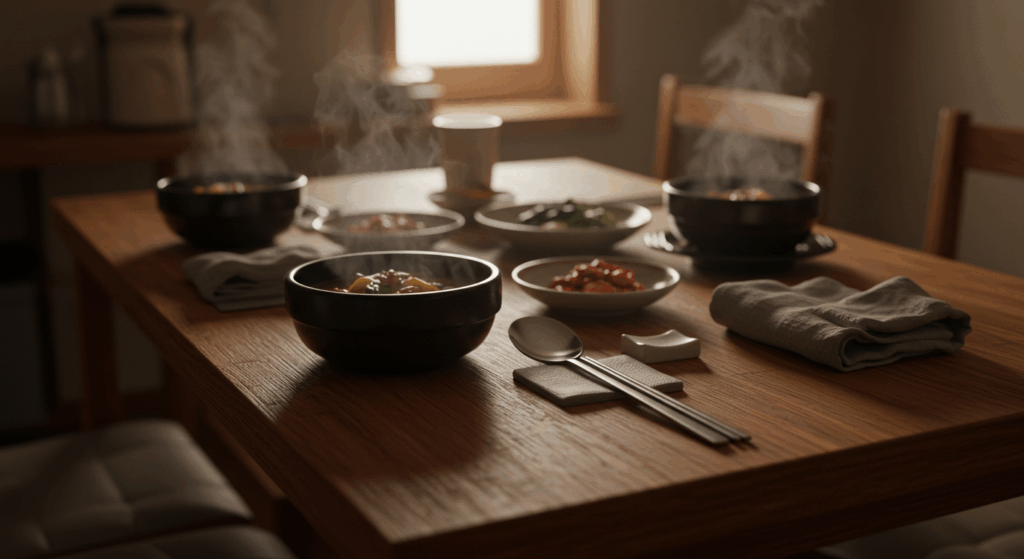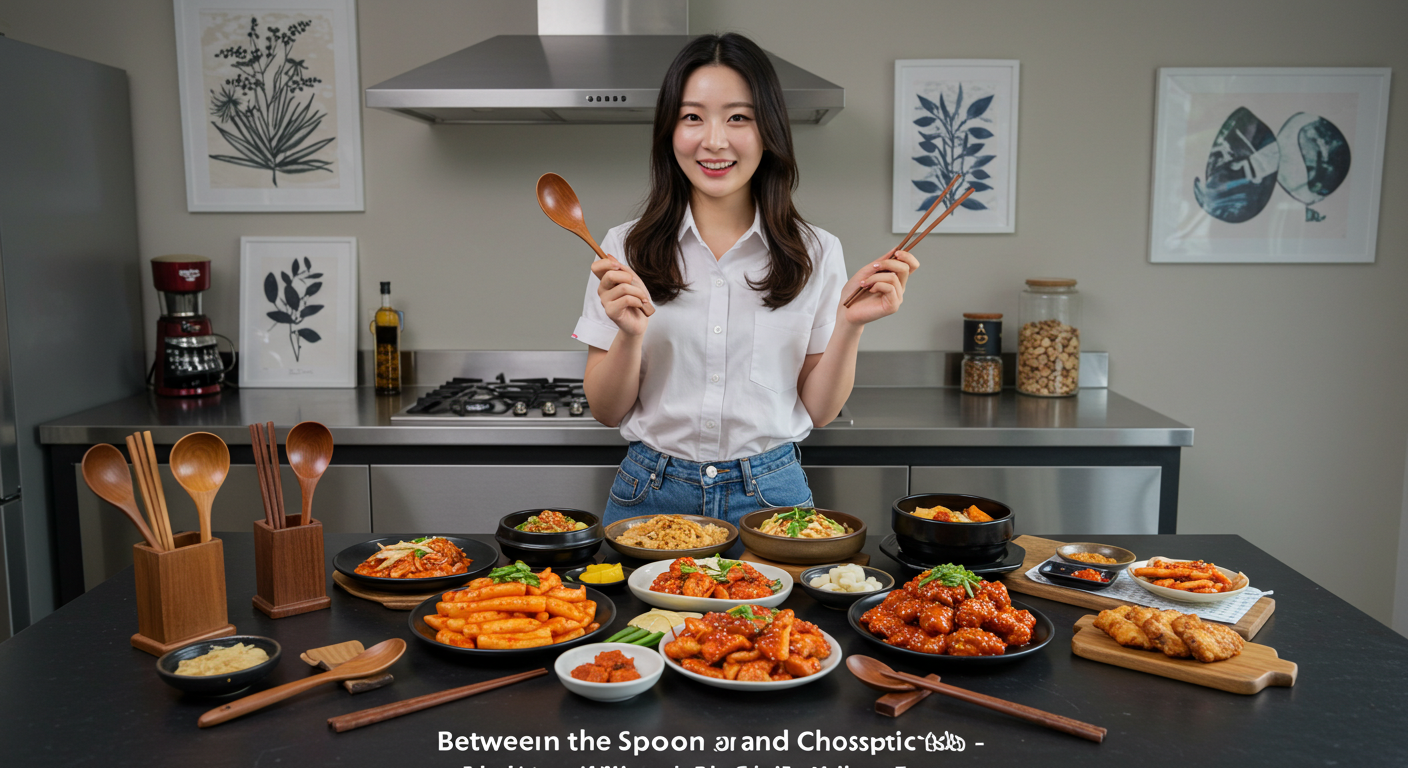The First Encounter with Korean Spoon and Chopstick Culture – “Why Use Both?”
At a Korean restaurant, my foreign friend looked puzzled and asked, “Why do you use both a spoon and chopsticks?” It’s a simple question, yet it reveals the uniqueness of Korean dining. In Korea, a spoon and chopsticks are always placed together as a set—an unfamiliar sight to many non-Koreans. While Western dining separates utensils by function, Koreans use the spoon for rice and soup, and chopsticks for side dishes. This coexistence symbolizes a balanced dining culture.
The Awkward First Meal – Choosing the Right Utensil
During our first Korean meal together, my friend was unsure which utensil to use. He picked up the spoon, then the chopsticks, hesitating every time. Soup called for the spoon, kimchi for the chopsticks, rice for the spoon—but each choice felt uncertain. Meanwhile, Koreans at nearby tables moved smoothly, switching utensils without thought. There seemed to be rules, yet no written manual. It was a subtle order that came naturally with experience.
Trying to Imitate – Learning the Rhythm of Utensil Use
A few days later, he visited a Korean restaurant again, more observant this time. He began mimicking what he saw—spoon for stew, chopsticks for meat, neatly placing utensils back in position after use. Gradually, the unfamiliar rhythm became more natural. The awkwardness faded as he embraced the pace of Korean dining.
A Moment of Realization – Warmth and Order in Korean Table Etiquette
What he discovered was more than just a way of eating. “It’s like a dance,” he said. “The spoon and chopsticks move together in harmony.” Indeed, Korean spoon and chopstick culture reflects communal order, silent communication, and thoughtful manners. Quietly setting down one’s utensils signals the end of a meal. Waiting for elders to eat first shows respect. There was a time when using the left hand for utensils was discouraged, and watching TV or multitasking during meals was frowned upon. While modern habits have relaxed these customs, traditional etiquette still holds importance in family meals and ceremonial settings. The spoon and chopstick set is more than just a tool—it’s a symbol of Korean values.

Reconsidering My Own Table – Finding Meaning in the Familiar
His insights made me reflect on my own meals. The spoon and chopsticks I had used without thought now felt different. Korean dining isn’t just about eating—it’s about harmony, discipline, and emotional warmth. Even now, when I see a spoon and chopstick set abroad, it brings back memories of the comforting warmth of a Korean dinner table.
🔗 Recommended reads to go with this post
